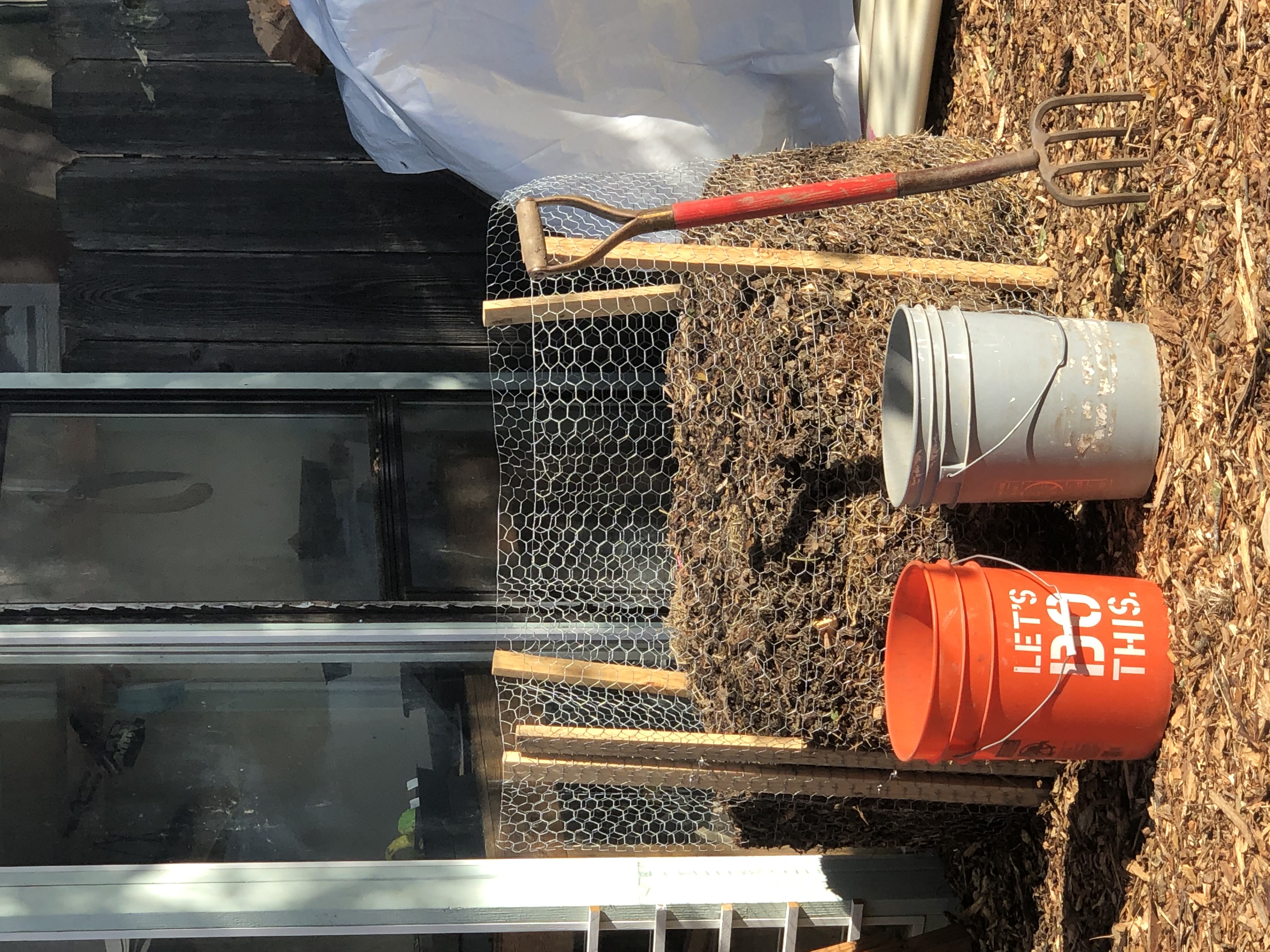I’ve been building compost systems for years now, and I have to say that our latest setup on Smiling Soil Urban Farmstead is my absolute favorite for being both an effective and inexpensive compost setup. Compost is absolutely critical for helping your soil and plants thrive. Here I will dive into some key background info on compost as well as provide all the details for the compost system we built.
Our latest setup came from a must-have book for any and all gardeners interested in growing an abundance of food, How to Grow More Vegetables *than you ever thought possible on less land with less water than you can imagine. It’s a must have!
You can also check out our other must-have books here.
Why compost?
Compost and chemistry go hand-in-hand. Let’s picture a single plant in your garden. When it is time to trim leaves or flowers, often times they are discarded in a trash can or green bin. When this happens, all the nutrients (think molecules/atoms from soil) that were used to create these leaves & flowers, as well as the carbon pulled from the air, are thrown out of your garden system. Therefore, your soil is depleted of nutrients, oftentimes leading to folks going out to buy processed fertilizers to try and replenish the soil. Yet, with composting, you can take those atoms that left your soil to become a plant, and essentially bring them back to the soil via decomposition (chemical reactions creating different combinations of atoms into new molecules). It’s a beautiful cycle that will lead to a much happier garden and happier you.
Compost also organic acids which make nutrients much more readily available for plants to use. It is absolutely unnecessary to buy fertilizers for soil if you are able to achieve a thriving compost system and apply crop rotations in your garden.

Did you know? … The best way to control insect infestation and plant disease is to develop healthy soil. Microbe diversity thrives in healthy soil & can produce antibiotics that help plants resist diseases and repel harmful insects. (There’s more than 6 billion microbial life-forms in 1 level teaspoon of cured compost!)
Choosing the best location for your compost
I completely lucked out on location for our compost, as I had no idea when we were purchasing our home last year that oak trees are actually an ideal location to have a compost near! Most deciduous trees (trees that lose their leaves in the winter) can be ideal locations but an evergreen (keeps leaves all year round) will do as well. Having your compost above ground near a tree provides shade for the compost to keep its moisture during summer’s heat. However, make sure to avoid building a compost near a walnut or eucalyptus tree. Lastly, make sure that your compost system is more than 6 feet from the trunk of the tree you choose to avoid any negative impacts on the tree.
The Five Key Compost Ingredients
There are five different ingredients to add to your soil:
- Mature (brown) dry materials: These are more dry, woody items that are less easily decomposable such as straw or hay, chipped branches, pine needles or corn stalks.
- Immature (green) vegetation: These are items such as fresh leaves trimmed from garden, grass clippings, and kitchen scraps. These items have similar percentage amounts of carbon and nitrogen. The carbon and nitrogen are also much more readily available from decomposition.
- Soil: This is added after any immature vegetation to avoid smells and flies.
- Oxygen: Critical to the decomposition process, oxidizing compost.
- Water: It is absolutely imperative to keep your compost pile moist to support microbial life and avoid anaerobic conditions. We use our water from our rainwater catchment system to continually moisten the compost.
Compost Mixture Ratio Options
There’s a whole science to compost – but let’s break it down. (I couldn’t help myself..)
- — Too much —2.5 parts mature/0.5 parts immature/0.25 soil – This will provide 60:1 carbon to nitrogen ratio.Pros: Generally releases nutrients much slower over varying time period. Can be used to build up soil fertility over a long term basis.
- Pros: Generally releases nutrients much slower over varying time period. Can be used to build up soil fertility over a long term basis.
- Cons: Not ideal for growing vegetables that need more immediate, readily available nutrients.
- — Too little — 45% mature/45% immature (Green)/10% soil – This will provide a 30:1 carbon to nitrogen ratio.
- Pros: Cures faster due to hotter temperatures. Immediate readily available nutrients.
- Cons: A lot of carbon is lost in this ratio resulting in less usable compost
- — Juuuust right —2.25 parts mature/1 part immature/0.5 part soil – This will provide 40:1 carbon to nitrogen ratio.
- Pros: The best of both worlds! Both immediate and gradual released materials combined. This is the choice we go with from Grow Biointensive’s recommendation.
For the 40:1 carbon to nitrogen compost setup, we simply fill a 5-gallon bucket with kitchen and garden scraps, then add it to compost, watering it well and also adding 2.25 buckets of straw & wood chips, followed by half a bucket of soil.
Do you need to turn your compost?
Compost piles do not necessarily need to be turned. In fact, while it may take longer to cure your compost if you do not turn it, you will produce more compost per unit of material supplied! Therefore, I’ve built two compost containers to vary between. I can set one up on a garden bed that is off for a season, while letting the other pile break down, and then unwrap its container and start yet another pile. This allows for flexibility, as long as your willing to have piles sitting around in a dedicated place in your yard.
Our Favorite Compost Setup
Ok… now’s the time to break down the build of this effective and inefficient compost setup. The following video shows how we built our compost ring.
Materials
- 5 3ft 1×2’s
- 12ft of 3ft wide 1inch chicken wire
- 2 sets of 2in hooks & eyes clasps
- staple gun & staples
- measuring tape
- pliers
- drill
- hammer
Directions
- Cut 1×2’s into 5 3ft 1×2 pieces.
- Clean the edge of your chicken wire to be the same length.
- Staple chicken wire edge to first 1×2. Fold the chicken wire the 1×2 to opposite side, using hammer to guide the fold. Again, staple the chicken wire to the 1×2 (this will be the outside of the compost ring.
- Measure 3ft from first 1×2 and slide another 1×2 under chicken wire, stapling together.
- Repeat step 4 for next two 1×2’s.
- For the final 1×2, measure as you did for the prior 3 1×2’s. Then, flip over the entire compost ring and fold the wire once more over onto the 1×2, using a hammer to help wrap the wire. Staple and snip the remaining wire. (This side is inside of compost ring).
- Flip compost ring over once more and attach the hooks and eyes. Mark at 1ft and 2 ft on the 3 ft 1×2. Pre-drill a hole and screw in the hooks and eyes.
- Dig up the soil to loosen area where compost will be going (See recommended locations above). You may feel like you are wrestling a bear during initial setup (call for backup if possible). Pour 3 inches of sticks/larger pieces of wood at base to help hold structure as well as for air flow in compost. Start adding compost layers (2.25 5-gallon buckets mature materials like straw and wood chips, 1 5-gallon bucket immature materials like kitchen scraps and garden clippings, and 1/2 a 5-gallon bucket of soil).
There you have it! If you have any questions, make sure to comment below and we look forward to seeing your compost builds! Tag @SmilingSoil or #SmilingSoil so we can see what you are up to.
Happy Composting,
Melissa
Thank you for supporting us! This post contains affiliate links.



